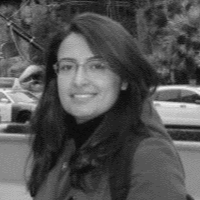International Journal of Computer Network and Information Security (IJCNIS)
IJCNIS Vol. 7, No. 7, 8 Jun. 2015
Cover page and Table of Contents: PDF (size: 833KB)
An Ultra-secure Router-to-router Spontaneous Key Exchange System
Full Text (PDF, 833KB), PP.1-9
Views: 0 Downloads: 0
Author(s)
Index Terms
Key exchange, Discrete logarithm, Multi-stage protocol, Initialization vector, The braiding concept, Quantum Key Distribution
Abstract
This paper presents an ultra-secure router-to-router key exchange system. The key exchange process can be initiated by either router at will and can be carried out as often as required. We compare the efficacy of the proposed approach with contemporary quantum key distribution (QKD) systems and show that quantum-level security is attainable without resorting to single photon generators and other attendant instrumentation associated with QKD. Furthermore, the proposed system addresses the extremely limited geographical reach of commercially available QKD systems and other environmental restrictions they must operate in. The proposed system carries out all processing in electronics and is not vulnerable to the man in the middle attack. The medium of transfer can, of course, be optical fibers as is common in telecommunication.
Cite This Paper
Pramode K. Verma, Mayssaa El Rifai, "An Ultra-secure Router-to-router Spontaneous Key Exchange System", International Journal of Computer Network and Information Security(IJCNIS), vol.7, no.7, pp.1-9, 2015. DOI:10.5815/ijcnis.2015.07.01
Reference
[1]Kaicheng Lu, Computer cryptography “Computer network data privacy and security.” Tsinghua University Press, 2003.
[2]Stallings, W., “Cryptography and Network Security: Principles and Practice.” Prentice Hall, 5th edition copyright 2011,2006,2003 pp. 52,53.
[3]Ore, O. “Invitation to Number theory.” Washington, DC: The mathematical Association of America, 1967.
[4]Rosen, K. “Elementary Number theory and its Applications.” Reading, MA: Addision-Wesley, 2010.
[5]Beth,T.;Frisch,M.;and Simmons,G.; “eds.Public-key Cryptography:state of the Art and Future Directions”. New York: Springer-Verlag, 1991 .
[6]Diffie W., and Hellman M., “New directions in Cryptographiy.” IEEE trans. in Information Theory, 22(1976), 644-654.
[7]Diffie W. and Hellman M., “Exhaustive cryptanalysis of the NBS data encryption strandard.” Computer 10(6) (June 1977), 74-84.
[8]Popek, G., and Kline,C. “ Encryption and secure compute Netwrorks.” ACM computering surveys, December 1979.
[9]Merkle, R. “Secrecy,Authentication, and public key sharing.” PhD. Thesis , Stanford University , June 1979.
[10]Needham, R., and Schroeder, M. “Using Encryption for Authentication in Large Networks of Computers.” Communications of the ACM, December 1978.
[11]Kak, S.: A “Three-stage Quantum Cryptography Protocol”. Foundations of Physics Letters 19, 293, 2006.
[12]Mandal, Sayonnha, et al. “Implementation of Secure Quantum Protocol using Multiple Photons for Communication.” arXiv preprint arXiv:1208.6198 (2012).
[13]Yuhua Chen; Kak, S.; Verma, P.K.; Macdonald, G.; El Rifai, M.; Punekar, N., “Multi-photon tolerant secure quantum communication — From theory to practice.” Communications (ICC), 2013 IEEE International Conference on, vol., no., pp.2111,2116, 9-13 June 2013.
[14]El Rifai, M.; Verma, P.K., “An Algorithmic Approach to Securing the Three-Stage Quantum Cryptography Protocol.” Trust, Security and Privacy in Computing and Communications (TrustCom), 2013 12th IEEE International Conference on, vol., no., pp.1803,1807, 16-18 July 2013.
[15]Bhagyashri Darunkar ; Pramode Verma; “The braided single-stage protocol for quantum secure communication” Proc. SPIE 9123, Quantum Information and Computation XII, 912308 (May 22, 2014); doi:10.1117/12.205016 .
[16]http://www.magiqtech.com/Products_files/8505_Data_Sheet.pdf.
[17]http://www.idquantique.com/scientific-instrumentation/ cla vis 2 -qkd-platform.html.
[18]Bennett, Ch. H., Brassard, G. “Quantum Cryptography: Public Key Distribution and Coin Tossing.” IEEE Conference on Computer, Systems, and Signal Processing, 1984, pp. 175-90.
[19]Kollmitzer, C., Pivk, M. (Eds) “Applied Quantum Cryptography” Lect. Notes Phys. 797 Berlin Heidelberg; New York: Sprigner, c2010 pp 101-102.
[20]L. Washington, “Elliptic Curves: Number Theory and Cryptography” Chapman & Hall/ CRC Press, 2003.

